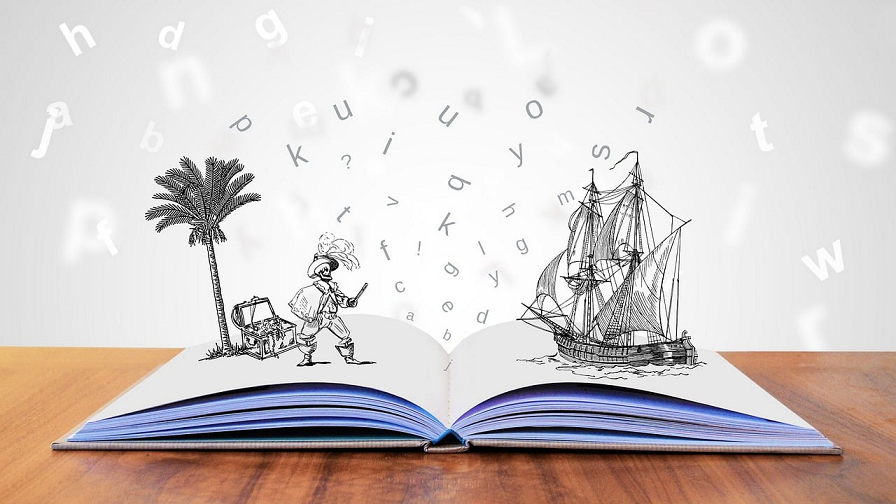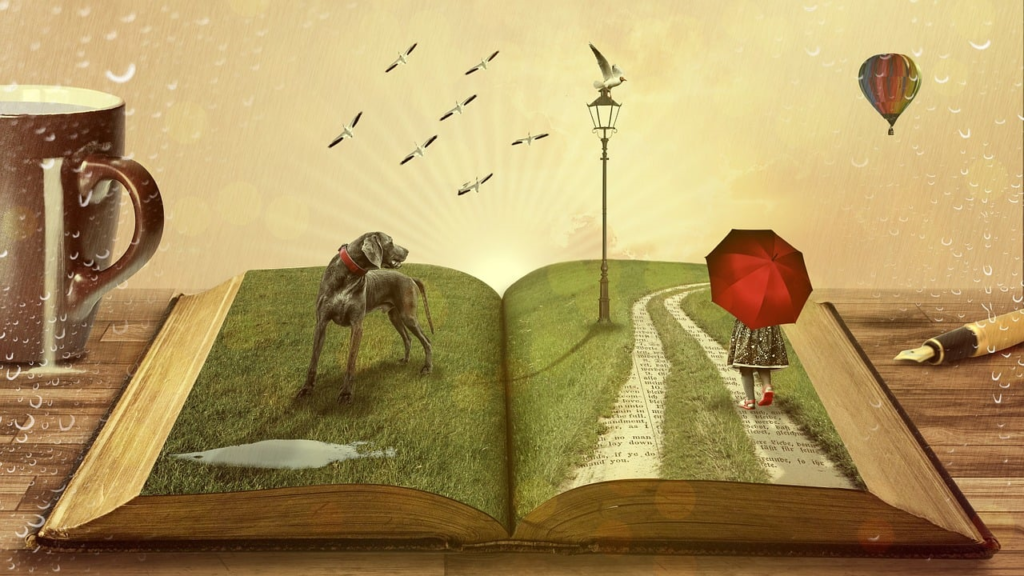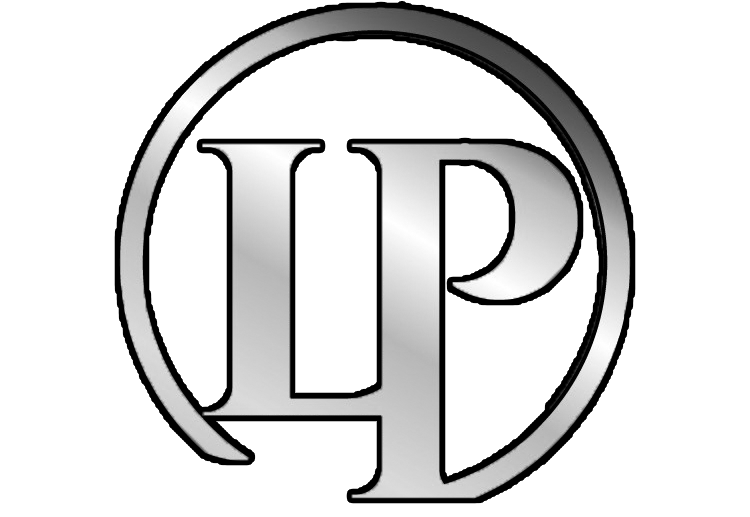
Learning how to write a book with no experience may seem like a daunting task – something that you’ll hear about but will seem out of your reach as a new writer.
That notion is – to be frank – absurd!
Writing a book, in essence, is very similar to writing shorter lengths of fiction. The only real difference is that you have a larger word count to tell more of the story. Think of it like this:
- A short story is a snippet of a larger story or world that you’ll tell
- A novel or book allows you to flesh out that larger story or world in detail
But, where do you begin? You have an amazing idea jotted down on a bit of scrap paper, or on an electronic notepad somewhere – how does that evolve into a fully fledged book?
Let’s not get ahead of ourselves just yet! While anyone can write a book with no prior experience, not every idea can be turned into a book. Some ideas quite simply don’t need 70, 80, or 90 thousand words to tell them properly.
The first piece of advice when it comes to writing books I would like to highlight is:
Don’t force your idea to fit the word count.
But before I continue, you’ll probably want to know a little bit about me, who I am, and why you should consider the advice I provide.
Why Should I Listen To You?
This is a valid question, after all, anyone can put together an article with ChatGPT or another AI large language model these days (don’t worry, this one was written the old-fashioned way).
If you don’t care, that works too! Simply skip ahead for some advice on getting your novel started.
My name is Stewart and I am a professional writer from Glasgow, Scotland. When I say professional, I refer to the fact that writing is my job (or a large part of my job) and always has been. On the internet, content is king after all!
My day job is an SEO Manager, but i’ve climbed the career ladder from a content writer five or six years ago to where I am now. Every step of the way involved writing high-quality articles on a daily basis.
But yes, I know, those aren’t books.
Aside from my career, I’m qualified in Media and Communications (with an Undergraduate) and gained a Dux in my creative script in my final university year. It is fair to say storytelling is something I’ve always been passionate about.
Of course, I also run Lore Publication which has been a fairly successful little experiment on providing free fiction. I’ve also published a poetry chapbook and – while my novels are not yet available – I have written various full-length works that are nearing completion.
With all that said and done, this is how I approached writing my own stuff – and this is more of an educated opinion piece than a die-hard, multi-stage course you might find from another published author somewhere.
But do stay a while longer and at least give my advice a go – it won’t hurt!
Writing A Book With No Experience – Where To Start?
It all starts with an idea. However, I’ve known writers that are guilty of thinking or working on their ideas at the expense of writing – that won’t get you anywhere.
Your Book’s Idea
You should:
- Have a simple premise. Is it about survival? Love? Self discovery? For instance, if you want to write a post-apocalyptic story about a family trying to survive, keep that goal as your primary narrative.
- Have a defined genre and don’t defy genre expectations. If you want to write a sci-fi adventure book, that’s fine – but don’t start muddling it by including tropes or genre conventions that don’t match your concept. This is a very good way to alienate your readers.
- Stay within a defined rule set for your genre. While it is tempting to break the rules and colour outside the lines, it is usually best practice to learn about the rules and cliches to use them. They work for a reason. Readers enjoy them.
- Write about what you know. If you love romance novels, start there. As a reader of romance you’ll know what your target audience will want.
- Keep the cast of characters simple and easy to understand. Don’t overcomplicate your narrative by fleshing out a host of characters before you begin writing. Decide on 2-4 characters to begin with and add more as you write. This will help you define character arcs, motivations, and flesh your characters out correctly.
Worldbuilding
Every idea will need a world for your story to unfold. This will vary wildly depending on what kind of book you are writing. A crime novel, for instance, won’t need a particularly unique world but it will require good research of the city or place it will be set in.
Generally, for worldbuilding:
- Keep the setting self-contained. If you are writing a fantasy or science fiction book, there’s no need to go into a huge amount of depth just yet about locations, places, or cultures. You’ll find that you can expand this as you go. A little bit of work worldbuilding will be necessary, but only focus on the areas or locations you’ll mention in your book to begin with.
- Do give a lot of attention into the cultural and social aspects of your setting. This is very important and lends well to making your book feel believable. For sci-fi and fantasy settings, it will likely be necessary to flesh out the cultures and society before you begin writing (but only surface level detail). The more in-depth detail can be added or developed as you write. For real world settings, again, research will be paramount to understand the place and people you are writing about.
- Draw or access a very rough map. This will help you visualize your world and the journey your characters will take within it. Again, for sci-fi and fantasy you’ll need to create a map. For the real world, taking a look at Google Maps or Google Earth will suffice.
Character Development
Before you get to penning your first chapter or two, you’ll need to have a general idea of where your character arcs are going and you’ll definitely need to decide who your characters will be.
Your Main Protagonist
- What gender they are, or if they are genderless.
- What strengths do they have?
- What kind of personality do they have?
- What flaws or weaknesses do they have – both physically and psychologically.
- Decide upon their identity. Are they black? White? Brown? What ethnicity are they (if that is applicable to them).
- What is their ideology or belief structure? What morals define them?
- Do they have any disabilities? How will this impact the narrative?
- Are they LGBTQIA+ and how does this factor into the narrative?
Then, in relation to the narrative, you’ll need to decide what their goal is. What motivates them? For instance, in a survival story the motive is clear – but do they value their own life over others or are there other characters (say a spouse or child) that they’d sacrifice themselves for?
Another consideration for your main character is whether or not you give them a physical description – as there are pros and cons to doing so.
- Providing a description of what the character looks like is a great way for readers to imagine the character and various scenes in their head.
- Choosing to leave the main character description-less is a great way for readers to imagine themselves as the main character.
Final Character Tip: the protagonist doesn’t always need to be a hero, they can also be a villain. Remember, a protagonist is simply the character we follow and root for to accomplish their goal or task. The nature of the goal or task makes them ‘good’ or ‘bad’ – a ‘hero’ or a ‘villain’.
Your Main Antagonist
The same bullet points above can be used to flesh out your antagonist. However, it is very important to give your antagonist a believable moral and ideology. Being ‘bad’ for the sake of being ‘bad’ will not do your story justice. And again, not all antagonists will be ‘bad’.
All an antagonist does is get in the way of your main protagonist and it may not even be a person. In survival stories it is very common for animals or even the weather to be the primary antagonist.
If you are writing a person as an antagonist you need to write them in such a way that, from the antagonist’s perspective, they are the hero of their own story. If you can accomplish this while making them a formidable force standing in the way of the protagonist’s goal, congratulations! You have a well written antagonist.
Bonus Tip: How To Write A Fight Scene (Complete Guide)
How Do I Start Writing My Book?

Now that we’ve covered what I like to call the ‘lore’ or the ‘homework’ for your book or idea, it is time to get writing.
A lot of authors and writers will say that the opening line is the most important in the book. It is meant to capture your reader’s attention and get them hooked. While this does stand true to an extent, most readers will often judge a book by the first paragraph, page, or even the first chapter. While the opening line is important, it isn’t worth losing sleep over just yet and can easily be altered in future drafts.
A few good ways to start are:
- Setting the scene. Describe where your character is, the place where most of the story will take place, or a particular setting that is crucial to your narrative. For example, for a story set in New York you could write something like:
- The violet twilight loomed, silhouetting the sleepless towers against the encroaching darkness. In the bustle of the gloom a lone gunshot echoed through the concrete jungle of Hell’s Kitchen. And then silence. Eerie silence.
- A shocking statement. This works great for all kinds of fiction, but could be something like:
- Jesse never thought of herself as violent; yet here she was holding a severed finger.
- The narrator opening. If you plan to have a 3rd person narrator, using this technique from the get-go is usually the best way to start:
- The town of Townsville had always been a quiet place; then the Smiths showed up. It was a quaint Sunday afternoon after the community pot roast when their car chugged down main street. At first, nobody knew what to make of them with a city car so far out in the country.
The vital thing to remember is that your opening needs to seed interesting, important, and relevant information in the first paragraph or page. Think of a book as a song; they always start with a beat or a melody that builds to a chorus. Books are similar. Having a great opening paragraph or page is like playing a catchy melody for a song.
How Do I Structure My Book?
Most writers will be capable of putting together a short story of a few thousand words. If you can do this already, then you’ll be pleased to know that writing a book uses the same principle.
In reality, all books are 13-15 short story style chapters strung together in sequence.
Obviously, this isn’t strictly true but thinking of each chapter as a type of short story is a great way to break down what seems like an impossible feat into something more doable.
When structuring your book, you can use a few different formats:
- You can use the 3 Act structure; beginning, middle, and end.
- You can tell a non-linear story. These types of stories use past and/or future timelines to flesh out the present day timeline – all converging to the narrative climax.
- Tell the story from various character perspectives to construct your narrative.
There are many more different types of structures you can use and variations of the above structures, but for your first novel these three are usually the easiest to work with.
The First Draft of Your Book
The first draft or what I like to call ‘the spew draft’ is for you to get your ideas, your rough narrative, and a general idea of your book’s structure onto paper. This draft will be horrible, full of plot holes, inconsistencies, and will likely feel ‘all over the place’ but it is necessary.
The ‘spew draft’ is designed to give you the foundation from which you’ll construct a cohesive and engaging narrative for your reader.
Using the 3 Act structure (as this is the most common structure to work with), a first or ‘spew’ draft should:
- Have the first 30-40% of the book escalating the narrative towards a major hurdle or problem. It should set the scene, the characters, and the character arcs for Act 2 and Act 3. In this Act you are ‘setting up the board’ so to speak.
- About the halfway point should be when the major obstacle presents itself to your protagonist. This will be their main challenge that they will need to overcome. This is often the Act that will push your character to their limits or ‘beat them down’ – where they lose, just when winning or accomplishing their task seems doable or within sight.
- The latter 30% of the book should be the final Act where the protagonist finally overcomes their obstacle (or doesn’t) – to either succeed or fail at their task.
For example, using a 3 Act structure you book could:
- Spend 3-4 chapters on Act 1.
- 6-7 chapters on Act 2.
- 4-5 chapters on Act 3.
Keep in mind that is only a suggestion – there’s no right or wrong quantity of chapters. Some books have 20 or 30 small chapters where others only have large chapters of 8 or 10 in the entire book.
The Second Draft of Your Book
The second draft will be, by far, the hardest draft you’ll do. The second draft is what I call the ‘polishing draft’ where you’ll refine your character arcs, tie up plot holes, and fix any inconsistencies. This is the draft that will make readers think you are a mastermind – that you knew what you were doing from the first sentence.
The sole purpose of this draft is to make your narrative work flawlessly, to make sure seeds and plotlines established earlier in the book are paid off, and that all characters have a satisfying conclusion.
Top Tip: Take your time with your second draft. Complete your ‘spew draft’ and come back to your novel after a few weeks. Your second draft should be as if you are starting fresh.
When doing this draft, you’ll want to read the book like a reader would and take notes of anything that you find is amiss. Then, only after you’ve read the book in its entirety, do you go back and start editing with your notes. This keeps you focussed and prevents (as much as possible) tunnel vision from setting in.
The Third Draft of Your Novel
The third draft is by far the most boring of all three; this is when you’ll get sick and tired of your book. However, the main goal of your third draft is not the narrative or the story itself but the content of the book.
Your third draft is for beautifying your work. This is the draft that you’ll think about word choice, your descriptions, your dialogue, and the language or sentence structure you’ll use to tell your tale. This is the draft that will help you forge your true style of writing.
Do you want to go heavier on the descriptions, or dial it back? Are your sentences too formulaic, or do you need to add a bit more of a consistent structure?
Most importantly during this third draft you should always be asking: how does this read?
This is also the draft where you’ll:
- Check spelling and grammar are correct
- Check that your spelling is consistent (is the UK or US English, for example)
- Worry about formatting. This is where you’ll select font, font size, line spacing, paragraph indents, trim sizes and so on.
- Begin to think about front page and back page matter; what will they include? Are you writing a dedication at the start? What about copyright and publisher information?
- Start the process of thinking about a cover, author bio, and blurb.
The Final Act (or Acts)

While the above guide is not by any means exhaustive (and probably skims over a few things), having an entire ‘how to’ is not realistic for learning how to write a book with no experience.
I do believe that taking the above advice in consideration before penning your first book will give you a better fighting chance at it!
But say you finish your manuscript, what’s next? I’ll leave you with a few thoughts:
- Find 4-5 different beta readers. Beta readers are essential to provide you with the feedback you’ll need to get your book ready for agents or shelves. A good beta reader is worth their weight in gold!
- Find an excellent, experienced editor. A good editor has a way of seeing the patterns in your narrative and how best to arrange them for maximum dramatic effect. Never underestimate the creative genius a good editor can bring to the table.
- Hire a professional to do cover art if you plan to independently publish. Take a bow and accept that you can’t do it all.
- Create a very long list of agents to approach with your manuscript. It is very likely you can go months or years without a call or email back. In today’s publishing climate it is very likely you’ll get hundreds of rejections before a conversion with an interesting party, agent, or publisher.
Most of all:
DON’T GIVE UP!
In the end you should write your book for the sake of writing it. Sure, getting it on a shelf is an accomplishment you should strive to achieve but it isn’t the be-all and end-all of writing. Half of getting published is who you know, and the other half is getting lucky.
Anyway, I hope this helps you on your merry way to writing your first book!
FAQs About Writing A Book With No Experience
Is it possible to write a book with no experience?
Yes. With resilience, patience, and a willingness to learn, it is definitely possible to write a book with no experience. Just like any skill, it takes practice to become good at writing. If you don’t feel ready to start your book just yet, then begin with writing exercises every day and practice.
What is the easiest type of book to write?
While this article is primarily about fiction books, non-fiction books often tend to be easier to write and to publish. Writing factually about a field or interest you know inside out is going to be infinitely easier than writing fiction.
Is 40 too late to write a book?
No. No age is ‘too old’ to begin your writing journey. Some of the most creative minds of the 21st century were over 40 years old when they began their work – most notably Stan Lee who created many of the Marvel characters.
What is the hardest part of the book to write?
When it comes to writing fictional novels, Act 2 or ‘the middle’ is by far the hardest to write. This is the section of your book where the ‘meat’ of the story is and it can get complicated to write. Keeping Act 2 dynamic, fresh, and interesting is a challenge every writer will face.
How long does it realistically take to write a book?
It may take a bit longer for a new writer (or shorter if you are a born natural), but on average it takes between 6-12 months to finish your manuscript. This is assuming you dedicate several hours a day to its completion. For those with full time jobs, it can often take longer.
